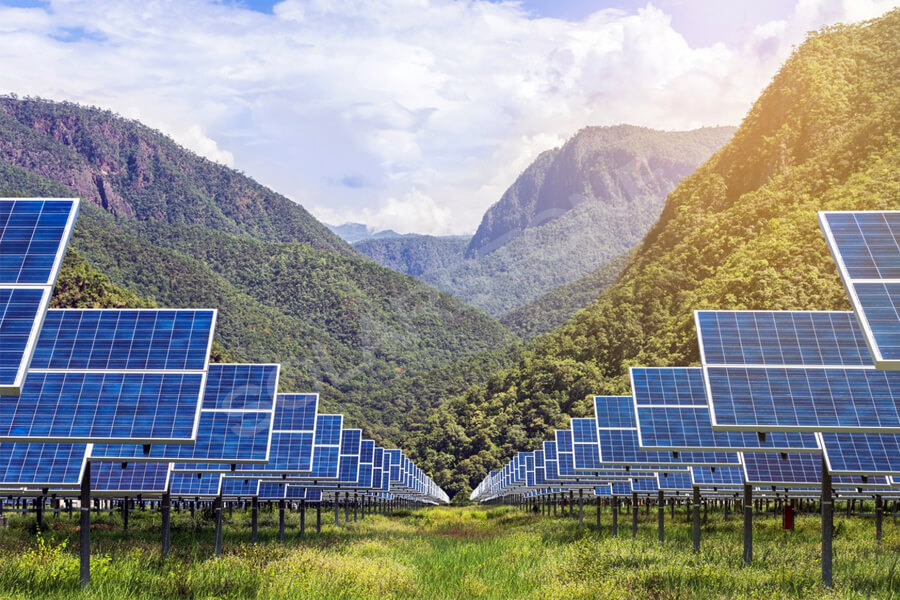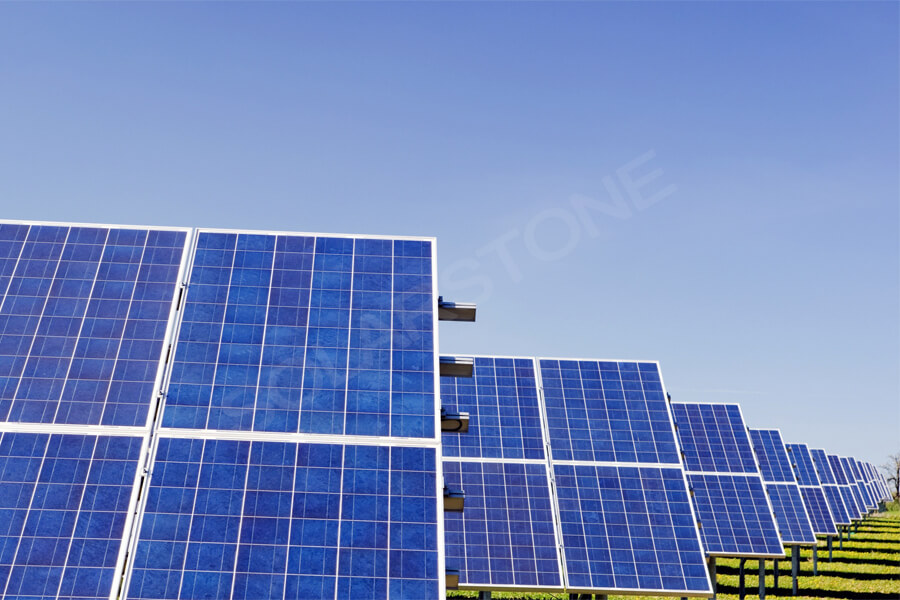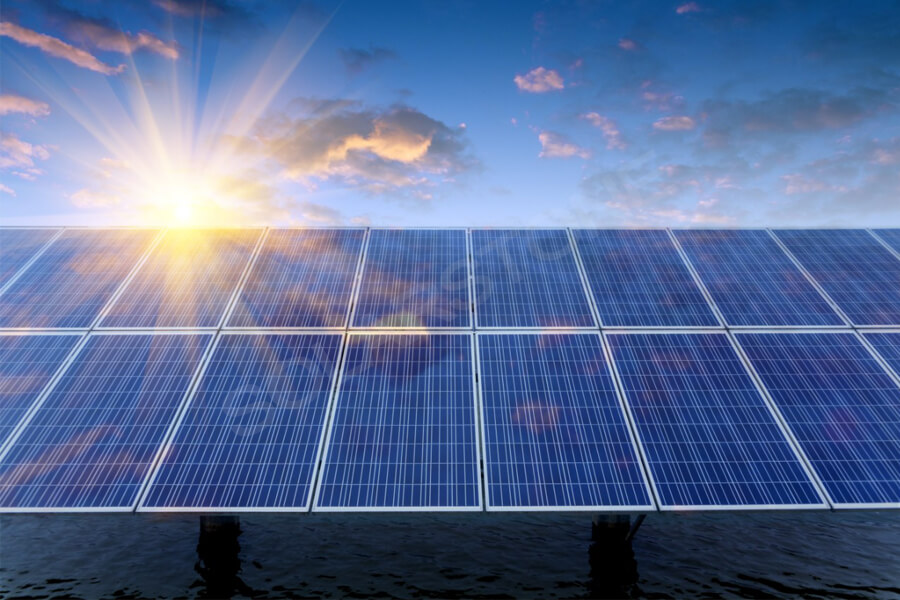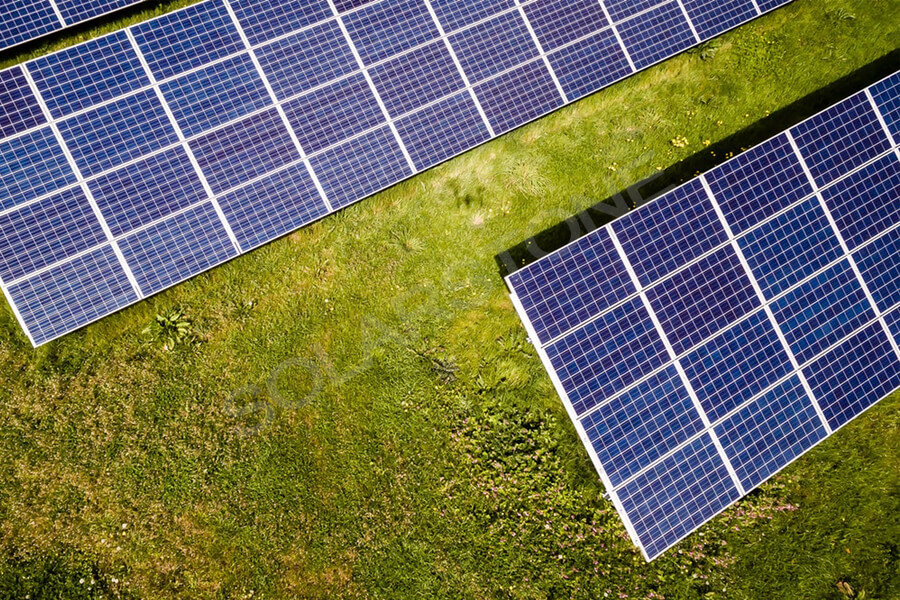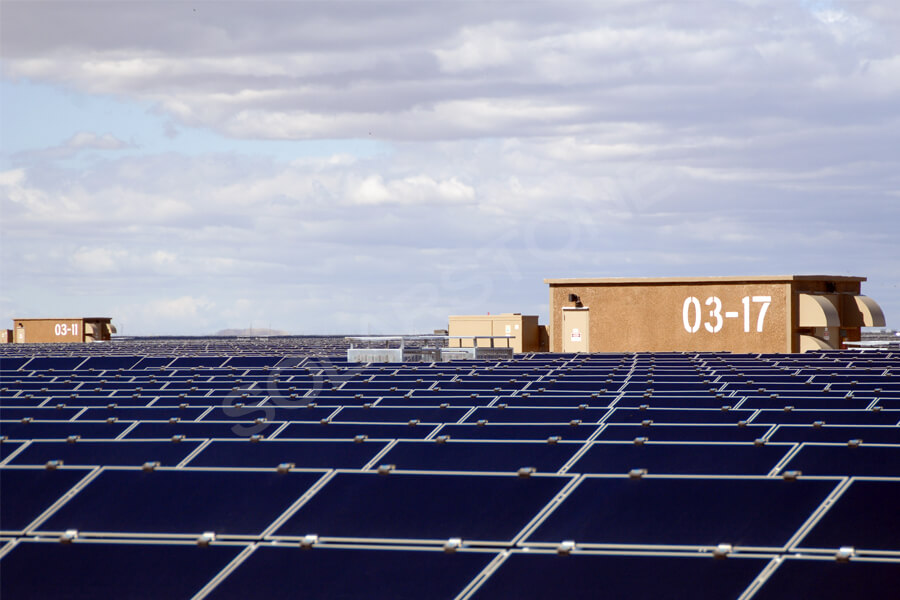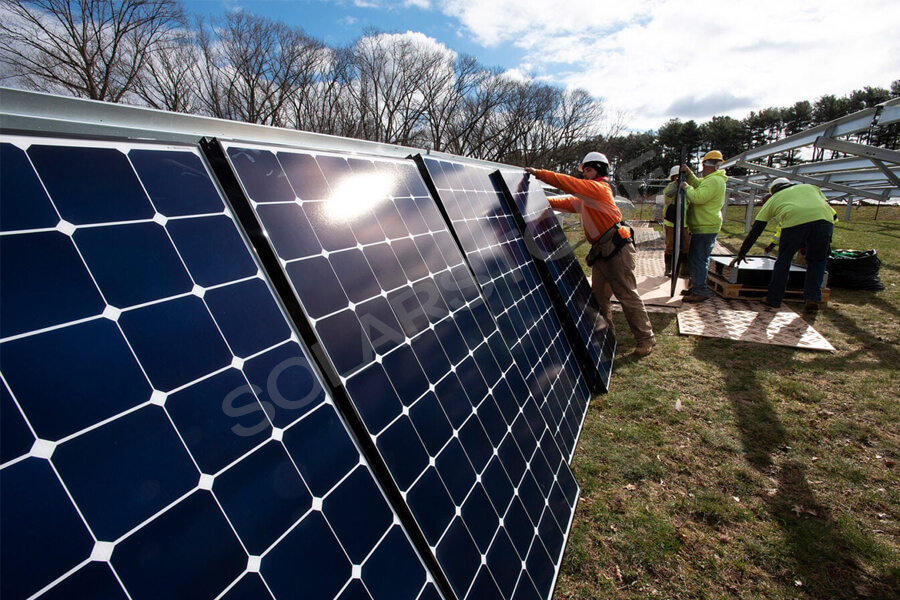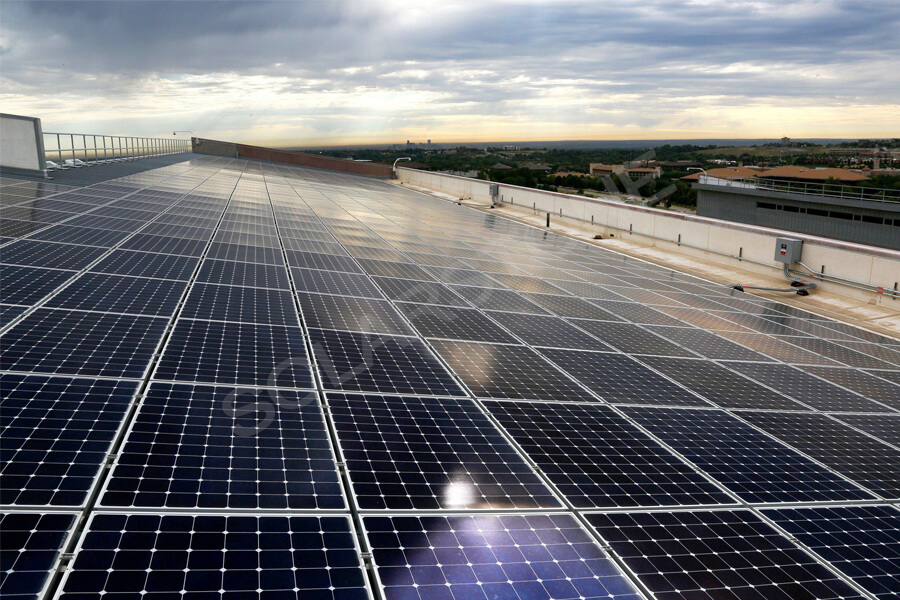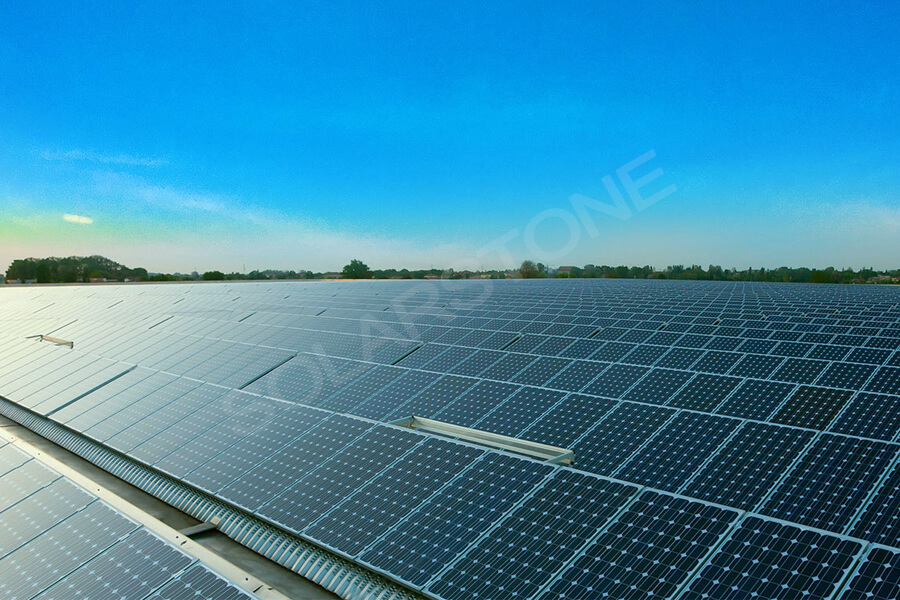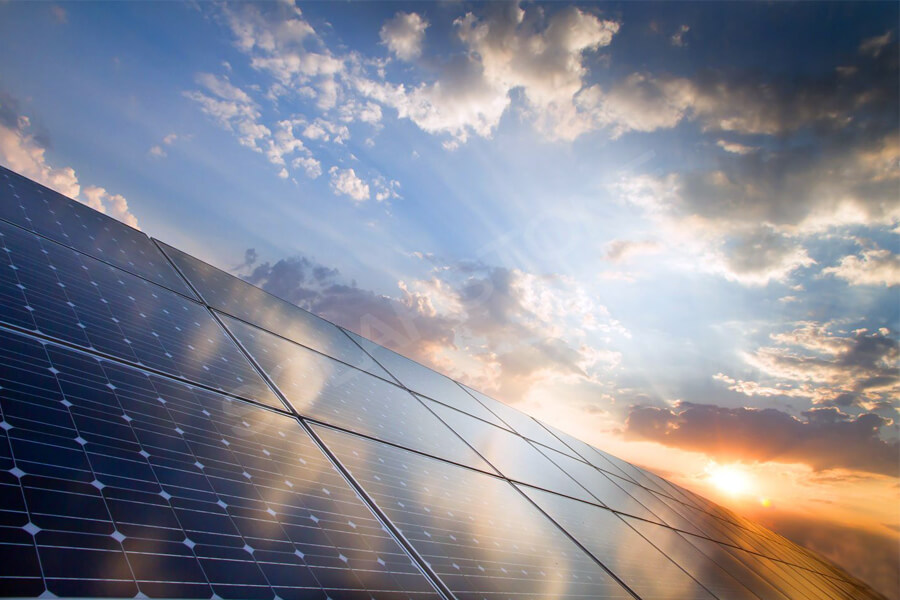A solar panel is one of the most important pieces of equipment of a photovoltaic power station, and the cost accounts for about half of the grid-connected system. The technical parameters of solar panels are very important to the system design.
Among them, the parameters such as maximum output power, open-circuit voltage, short-circuit current, filling factor and conversion efficiency are the symbols to measure the performance of the solar panels.
Only by understanding the technical parameters of solar panels can we correctly configure the photovoltaic inverter of the system and provide scientific and technical support for the reliable operation of the whole photovoltaic power station system.
Interpretation of technical parameters of solar panels
Maximum output power
We often say 265wp solar panel, where “P” is the abbreviation of a peak, representing its peak power of 265w. Regular solar panels will be marked with key technical parameters, that is, the technical parameters under “standard test conditions” 0 ~ + 3%” means positive tolerance, that is, the solar panel with a power range of 265w is qualified if its power range is between 265w and 273w.
The peak power is the maximum output power Pmax. The working voltage and current at this time are called the optimal working voltage VMP and the optimal working current imp.
Only under the standard test conditions (irradiance of 1000W / ㎡, solar panel temperature of 25 ℃), the output power of the solar panel is “nominal power” (265w). When the irradiance and temperature change, the power changes to some extent.
Open circuit voltage
Open circuit voltage VOC refers to the output voltage of the solar panel when the solar panel is exposed to a 1000W / ㎡ light source and the two ends are open circuits.
Short circuit current
Short circuit current ISC refers to the current flowing through both ends of the solar panel when the solar panel is irradiated by a standard light source and the output terminal is short-circuited.
Efficiency
The conversion efficiency of solar panels refers to the maximum energy conversion efficiency when the optimal load resistance is connected to the external circuit, which is equal to the ratio of the output power of the solar panel to the energy incident on the surface of the solar panel. The photoelectric conversion efficiency of solar panels is an important parameter to measure the quality and technical level of solar cells.
The output power of solar panels is related to solar radiation and temperature, regardless of equipment factors such as an inverter. The factors affecting solar irradiance include solar altitude angle or latitude, altitude, weather conditions, atmospheric transparency and the degree of atmospheric pollution; The temperature effect is described in the voltage and temperature coefficient below.
Theoretically, solar panels with the same size and nominal power must have the same efficiency. Solar panels are composed of solar cells. A solar panel usually consists of 60 (6 × 10) Or 72 pieces (6 × 10) It is composed of solar cells, with an area of 1.638 ㎡ (0.992m) respectively × 1.652m) and 1.94m2 (0.992m) × 1.956m).
When the irradiance is 1000W / ㎡, the power received on the 1.638m2 solar panel is 1638w. When the output is 265w, the efficiency is 16.2% and 17% at 280W.
Normal operating cell temperature
Normal operating cell temperature refers to the temperature reached when the solar panel is in the open-circuit state and under the following representative conditions, that is, the average equilibrium junction temperature of the solar panel.
Conditions: the inclination angle is 45 ° to the ground, the solar cell surface illumination irradiance = 800W / m, air temperature = 20 ℃, wind speed = 1m / s, and the electrical load is zero (open circuit).
The NOCT value of solar panels produced by normal companies is about 45 ℃, generally the smaller the better.
Voltage and temperature coefficient
The voltage is divided into open-circuit voltage and MPPT voltage (maximum power point tracking voltage), and the temperature coefficient is divided into voltage temperature coefficient and power temperature coefficient. During the design of the series-parallel scheme, the maximum open-circuit voltage and MPPT voltage range shall be calculated with open-circuit voltage, working voltage, temperature coefficient, and local extreme temperature (preferably in the daytime) to match with the inverter.
Generally, the peak power temperature coefficient of solar panels is between -0.38 and -0.44% / ℃. When the temperature increases by 1 ℃, the output power of the solar panel will decrease by 0.38 ~ 0.44%. That is, the temperature not only affects the power generation (the higher the temperature, the lower the power generation) but also may induce fire.
Filling factor
Another important parameter of solar panels is the fill factor FF, which is the ratio of the maximum output power to the product of open-circuit voltage and short circuit current.
FF is an important index to measure the output characteristics of solar panels. It represents the maximum power that can be output by solar panels with the best load. The greater its value, the greater the output power of solar panels. The value of FF is always less than 1.
In fact, due to the influence of series resistance and parallel resistance, the filling factor of the actual solar panel is lower than the ideal value given by the above formula. Series and parallel resistors have a great influence on the filling factor. The larger the series resistance, the more the short-circuit current decreases, and the more the filling factor decreases; The smaller the parallel resistance, the greater the current, the more the open-circuit voltage decreases, and the more the filling factor decreases.
Application-level
The solar cells of the solar panel are divided into three grades: A, B, and C, of which class A: the cells with conversion efficiency ≥ 14% and no defects in appearance; Class B solar cell: solar cell with a conversion efficiency of 10 ~ 14% and no defect in appearance; Class C solar cell (nonconforming product): that is, substandard sheet, including spotted sheet, broken grid sheet, aluminum-clad sheet, and notch sheet.
In order to run solar photovoltaic power generation for 20 ~ 25 years, there is no doubt that high-quality Class A solar panels must be selected, which is the most basic hardware condition.
Protection grade of the junction box
IP is the abbreviation of ingress protection. IP grade is the protection grade of electrical equipment shells against foreign matter intrusion, which comes from the standard IEC60529 of the International Electrotechnical Commission.
The format of IP grade is IPXX, where XX is two Arabic numerals. The larger the number, the higher the protection grade.
The first marked number indicates the protection grade of contact protection and foreign objects (e.g. 6 – dust prevention, completely preventing dust invasion, belonging to the highest grade), and the second marked number indicates the protection grade of water prevention (e.g. 7 – preventing water invasion during water invasion, the lamps can still ensure the normal operation of lamps under certain water pressure when they are submerged in water for an indefinite period; 8 — prevent water intrusion when sinking, belonging to the highest level).
The solar panel has been placed in the outdoor harsh environment for a long time, and the protection grade of the junction box must adopt high-grade dustproof and waterproof devices.


